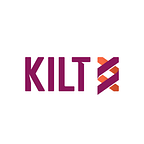Introducing “Protocol-Market Fit”
In our daily business at KILT, our Web 3.0 blockchain protocol brings us together with curious and enthusiastic enterprise customers, software integrators, and other ventures. All of them are eager to discuss with us the technical possibilities and economical opportunities our technology holds for them. During fruitful exchanges of that kind, there usually comes a point when we — just as all other innovative teams out there — are asked about our Product-Market Fit. Repeatedly outlining the nature of our industry-agnostic protocol to our conversation partners motivated us to question whether the Product-Market Fit is applicable to internet protocols in general. It made us come up with a more suitable concept: the “Protocol-Market Fit”.
A short definition of Product-Market Fit
Anybody who plans to invest time or money into a new product or protocol is indeed well-advised to ask about its resonance on the market. After all, a lack of market is the number one company-killer, as Andy Rachleff’s Law of Startup Success states:
When a great team meets a lousy market, market wins.
When a lousy team meets a great market, market wins.
When a great team meets a great market, something special happens.
To determine whether a startup product meets strong market demand and whether it receives enough positive feedback from the targeted market, Rachleff coined the term “Product-Market Fit”. It is often measured by:
- A good NPS (Net Promoter Score)
- The 40% rule: 40% of customers would be very disappointed if the product got taken away from them
- Rising product engagement
- Low churn rates
If all this is given, one could argue that Product-Market Fit has been achieved. Let’s keep in mind, however, that these criteria are only benchmarks to guide the decision-making process. Furthermore, Product-Market Fit isn’t achieved overnight. Marc Andreessen, the founder of a16z, puts it this way:
The customers are buying the product just as fast as you can make it — or usage is growing just as fast as you can add more servers. Money from customers is piling up in your company checking account. You’re hiring sales and customer support staff as fast as you can.
The ‘right’ market has the potential to grow a company to a stage where it established enough market power in order to enter new markets over time. For a young and lean company looking to sell a product, the above principles result in an undeniable need for focus on the right product for the right (specific) market.
Why Product-Market Fit doesn’t apply to Protocols
At KILT we develop a protocol which, strictly speaking, could be categorised as a product because it is something that we produce. People asking us about our Product-Market Fit seem to perceive our technical solution in the same way. We noticed that internet protocols are expected to pass the Product-Market Fit filter in order to be considered a reasonable choice for usage, investment, or promotion. Yet, we argue that successful protocols are not meant for narrow usage in a specific market.
To support our claim, let’s look at the history of one of the most successful protocols — one that we use every day.. When Sir Tim Berners-Lee invented HTTP in the early 1990s, he listed some of the areas he expected the protocol to be used for:
General reference data — encyclopaedia, etc.
Completely centralised publishing — online help, documentation, tutorial etc
More or less centralised dissemination of news which has a limited life
Collaborative authoring
Collaborative design of something other than the hypertext itself
Personal notebook
Sir Tim Berners-Lee could have tried to find a specific market to start with, gather feedback, refine his strategy, and adjust the messages to fit the market’s needs. Yet, HTTP was perfectly designed for what it was supposed to do, and what really drove the adoption of the protocol was its unforeseen widespread utility and simplicity.
The new concept of “Protocol-Market Fit”
Since we equally recognise the approaches of Andy Rachleff, Marc Andreessen and Sir Tim Berners-Lee, we at KILT propose an adjustment of the Product-Market Fit definition according to the requirements that an intendedly industry-agnostic technology demands.
We introduced the term Protocol-Market Fit in order to describe whether a protocol is ready to be widely utilised, marketed, and refined and we formulated the following criteria:
- Increasing vertical demand: an increase in the amount of inbound interest from various enterprises of totally independent markets who want to utilise the protocol
- Increasing horizontal demand: a growing community of software integrators seeking to build on the protocol and sell their solutions to their customers
- Simplicity: Feedback from the market signals that the protocol is simple enough for allowing any use case; restrictions won’t result from the protocol level.
- Economic efficiency: monetary incentives which drive real businesses to build services and solutions on top of the protocol (cost savings, new business models)
A protocol, in contrast to other products, doesn’t seek narrow spread and deep vertical industry penetration, nor does it face product-like sales cycles. Instead, a successful protocol aims to be designed so simple and so universally usable that fosters broad adoption, drives reach, and enables interoperability. It inspires participants from any kind of industry to build business cases on top of it. This spectrum of application fields tends to extend far beyond the imagination of the protocol makers. In fact, we are astonished by the seemingly countless use cases that people approach us with and we take this as an indicator that we’re heading in the right direction.
Authors: Nick de la Forge, Joana Papageorgiou | KILT Protocol
